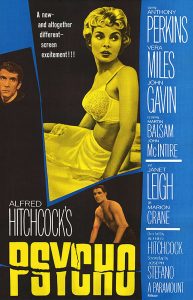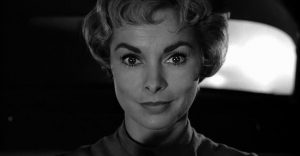The Underpinnings Of DID In The Movie “Psycho”
November 20, 2017

Source: johneaves.files.wordpress.com
Hollywood’s fascination with mental health issues is depicted at the end of the spectrum. Mentally ill individuals are often categorized as individuals who are murderers or a lonely but lovable guy who needs a love of a good woman to make the blues and addiction go away. Movies do not always give the real-life depiction of mental illnesses because after all, in general, these issues are annoying. Who would want to invest in a story plot with countless therapy sessions, long hours spent sleeping and doing nothing and endless trial and error on medications? Cinema is vital in shaping the societal perception and awareness of the world around us; however, it can also bring exciting information and inaccurate characterization to draw controversy and publicity to the story which might lead to profit.

Source: hifilmcriticssociety.org
People are fond of scaring themselves and what is scarier than monsters, the idea that ordinary people around us are capable of doing heinous crimes without any apparent motivations; thus, the prolific releases of suspense thrillers with serial killers’ plot. One of the most iconic films with a serial killer as the central theme is the movie, “Psycho.” Psycho was released in 1960. It is a Phoenix office clerk named Marion Crane who is tired of her life. Her dilemma is that she can’t marry her lover, Sam because most of his money is spent on alimony. One day, when Marion’s employer trusted her to bank 40, 000 dollars, she took the chance to embezzle the funds to start a new life. While driving to Sam’s store, she got lost and decided to stay in a motel. A motel is run by a depressed manager, Norman Bates who is also a serial killer with multiple personality disorder or dissociative identity disorder.
Dissociative identity disorder (DID) is a severe condition wherein a person’s identity is fragmented into two or more personality states or distinct characters which alternately controls an individual.
“DID is a severe form of dissociation, a mental process that produces a lack of connection in a person’s thoughts, memories, feelings, actions, or sense of their identity. This ranges from temporary amnesia to complex alternate identities,” said Dr. Ilene S. Cohen, PhD.
Dr. Phil Mollon, PhD, from the British Pyschoanalytical Society added, “[T]o the observer, the DID patient seems to have several ‘people’ living within one body, each with different personalities, memories, life histories, ages and even gender. Occasionally, these ‘alters’ have no
knowledge of one another despite their close proximity, with each living under the illusion that they are the sole personality.”
Some individuals describe the disorder as an experience similar to possession. According to Arnold Lieber, MD, DID was first discovered in 1880. It was then called “hystero-epilepsy.” “The symptoms when the disease was first discovered were contortions, convulsions, fainting, and impaired consciousness,” Lieber said further.
Some individuals describe the disorder as an experience similar to possession. Despite the movie Psycho being released before the modern classifications of the disorder, the director, Hitchcock did showcase the classical symptoms and elements in the diagnosis of dissociative identity disorder.

Source: i.pinimg.com
DID stems out from traumatic events or childhood. It is believed by experts as some coping mechanism of the psyche: considering that the traumatic events happened to someone else. The psychiatrist in the movie pointed out two events in Norman Bates’ life: the death of his father and committing matricide. Another symptom displayed as DID in the movie is social impairment. He lived in isolation and didn’t mainly have any friends or a reliable support system. Also, his illness showed a disturbance in the day to day life; however, one aspect of Mr. Bates that doesn’t fit the DID diagnosis is having conversations with his mother, which more appropriate to be classified as hallucinations or delusions which is often seen in schizophrenia patients. In the diagnostic and statistical manual of mental disorders (DSM-V), it states that there are recurrent gaps in the recall of everyday events, relevant personal information and traumatic events that are inconsistent with ordinary forgetting. Through this movie, the general public is made aware of rare mental illnesses. It is also essential to learn more about this condition and dispel misconceptions that having the disease will lead to being a serial killer.